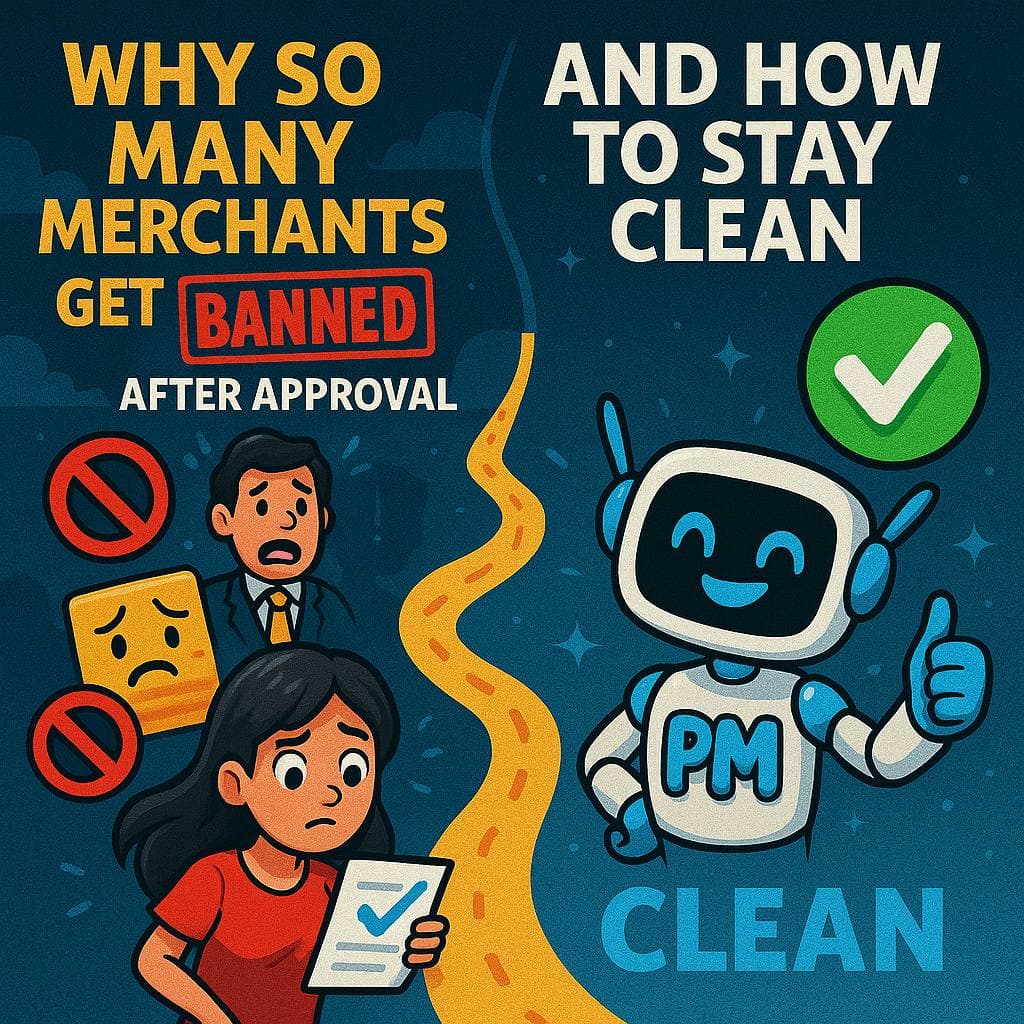
Why So Many Merchants Get Banned After Approval And How to Stay Clean
You finally got approved.
Your gateway is live.
Cards are processing.
You think you're in the clear…
Then suddenly terminated.
It happens every day.
And it’s one of the most painful (and preventable) problems in high-risk payments.
This post breaks down the real reasons merchants get banned *after* approval and how to stay off the radar for good.
The Approval Was Real… But So Was the Risk
Just because a processor gives you a green light doesn’t mean they’ll keep it.
Here’s why merchants still get banned:
- Post-approval audits
- Customer complaints or chargebacks
- Policy sweeps triggered by keywords
- Business model misalignment
Most merchants think they’re banned for no reason.
In reality, they tripped a silent flag and the system booted them.
Common Mistakes That Trigger a Ban (Even If You're Legit)
1. Linking payment pages to restricted products
If your checkout links to peptides, SARMs, or unverified claims it’s over.
2. Running ads that violate TOS
Facebook or Google flag your brand? Your payment provider might follow.
3. Scaling too fast without proof of fulfillment
Going from $5K to $50K without real infrastructure can look like fraud.
4. Using personal PayPal/Venmo for business
It might work short-term but you’re risking total loss of funds.
5. “Cleaning” your product names… but not your backend
We’ve seen merchants rename SARMs to "performance dust" but forget to clean product tags, URLs, or shipping info.
What Clean Merchants Are Doing Right
✅ Using stealth setupsthat separate brand and gateway
✅ Offloading risk by using **crypto onramps**
✅ Keeping compliance docs + policies ready for audits
✅ Processing under low-risk shells or offshore entities
✅ Following a real **compliance checklist** before launching
Solutions That Are Working in 2025
- 🔒 GhostVault for stealth PayPal/Stripe usage with clean routing
- 🌍 BlackVault for high-volume card processing via offshore onboarding
- 🧬 Crypto Onramps to accept cards while avoiding platform exposure
- 💳 Crypto Offrampsfor merchants that need fiat access without banking red flags
- 🏦 iBan Offramp + OTC for EU/global merchants moving large volumes
TL;DR Approval Isn’t Protection
If your business is high-risk…
You can get banned even when you play by the rules.
The game isn’t about getting approved.
It’s about staying invisible to the wrong systems and visible to the right ones.
Want to Stay Safe While Scaling?
📥 Download the Compliance Checklist for High-Risk Merchants →
(Used by merchants who want to avoid silent bans, freezes, and flags.)
🔎 Explore Safer Processing Options →
(Ghost, crypto, offshore, and hybrid setups no hype, just working flows.)
Related Posts
- Top 5 Gateways Peptide Merchants Actually Use (Without Getting Flagged)
- GhostVault Stealth PayPal & Stripe Options
- Fiat-to-Crypto Onramp Accept Cards While Staying Clean
- Compliance Checklist Download the Free PDF